Concept explainers
To determine:
How a proper application of Koch’s postulates would have prevented the misnaming of Haemophilus influenzae, which was named so because researchers isolated the organism from flu patients.
Introduction:
Haemophilus influenzae is an extremely small Gram negative
Want to see the full answer?
Check out a sample textbook solution
Chapter 20 Solutions
Microbiology With Diseases By Taxonomy (6th Edition)
- A 19-year-old woman presented because of the recent onset of breakthrough bleeding. She has been taking the same oral contraceptive Pill for two years, she has not forgotten any pills or had diarrhea or vomiting. She has been with her current sexual partner for four months and has recently stopped using condoms as additional protection. She is otherwise well. On examination the vulva and vagina are healthy and there is no inflammation. There is a small cervical ectropion and profuse mucus and pus discharge from the cervix. There is no tenderness on bimanual vaginal examination and no masses palpable. An endocervical swab and urine test was administered.arrow_forwardThree to five days after eating Thanksgiving dinner at a restaurant, 112 people developed fever and gastroenteritis. The dinner consisted of Roast Turkey, turkey giblet soup, mashed potatoes and crushed giblet gravy. The gravy was not refrigerated and was served the entire Thanksgiving day. The analysis of leftover food showed the same bacteria as was isolated from patients. a) What was the source of illness? b) What was the most likely microbe causing this illness? c) Was this an infection or an intoxication?arrow_forwardThis bacterium is a Gram-negative diplococci that possesses a capsule; finding these cells in cerebrospinal fluid (CSF) is a preliminary diagnosis for the deadly disease it causes. What is bacterium? A) O Streptococcus pneumoniae B) O Neisseria meningitidis C) O Cryptosporidium parvum D) O Clostridium tetani E) O Staphylococcus aureusarrow_forward
- Which of the following is true regarding pathogenic strains of Staphylococcus and Streptococcus, respectively? A) O Staphylococcus aureus is a common cause of sore throats. B) O Alpha-hemolytic Streptococci turn blood agar green and include members that cause pneumonia and tooth decay, C) Gamma-hemolytic Streptococci completely lyse red blood cells on blood agar. D) O The beta-hemolytic group of Streptococci does not contain any pathogenic types.arrow_forward1) How does cholera kill people? 2) What was Dr. Snow's initial hypothesis on the cause of cholera? 3) What methods did Dr. Snow use to test his hypothesis? 4) What was "The Report That Changed The World" ? 5) What is a voronoi diagram? 6) What is the definition of an "A B Test" ? 7) Name a place where cholera is still a problem today. 8)What public health policies would you apply to help that place?arrow_forwardStaphylococcus aureus can be responsible for all of the following conditions excepta) impetigo. b) food poisoning.c) toxic shock syndrome. d) scalded skin syndrome.e) athlete’s foot.arrow_forward
- What is the purpose of Koch’s postulates?arrow_forwardWhich of the following about Staphylococcus aureus is false?a) It is generally coagulase-positive.b) Its infectious dose is increased in the presence of foreign material.c) Some strains infecting wounds can cause toxic shock.d) Nasal carriers have an increased the risk of surgical wound infection.e) It is pyogenic.arrow_forwardThe following are the limitations of Koch's postulates EXCEPT: A. some pathogens cannot grow on artificial media and therefore cannot be identified as the causative agent of the disease B. some diseases involve multiple pathogens which produce similar symptoms making it difficult to pinpoint the causative agent C. some diseases are host-specific and re-inoculation may pose ethical concerns D. some microorganisms are present in the body fluids of the infected animal which make them difficult to be culturedarrow_forward
- Two microbiologists are writing a textbook, but they cannot agree where to place the discussion of botulism. One favored the chapter on nervous system infections, whereas the other insisted on the chapter covering digestive system infections. Where do you think the discussion should be placed, and why?arrow_forwardWhat is the most common type of nosocomial infection?a) Bloodstream infection b) Gastrointestinal infectionc) Pneumonia d) Surgical wound infectione) Urinary tract infectionarrow_forwardWhat was the common treatment for cholera beginning in the 1830s? Why was this not useful in large populations or during outbreaks?arrow_forward
 Human Anatomy & Physiology (11th Edition)BiologyISBN:9780134580999Author:Elaine N. Marieb, Katja N. HoehnPublisher:PEARSON
Human Anatomy & Physiology (11th Edition)BiologyISBN:9780134580999Author:Elaine N. Marieb, Katja N. HoehnPublisher:PEARSON Biology 2eBiologyISBN:9781947172517Author:Matthew Douglas, Jung Choi, Mary Ann ClarkPublisher:OpenStax
Biology 2eBiologyISBN:9781947172517Author:Matthew Douglas, Jung Choi, Mary Ann ClarkPublisher:OpenStax Anatomy & PhysiologyBiologyISBN:9781259398629Author:McKinley, Michael P., O'loughlin, Valerie Dean, Bidle, Theresa StouterPublisher:Mcgraw Hill Education,
Anatomy & PhysiologyBiologyISBN:9781259398629Author:McKinley, Michael P., O'loughlin, Valerie Dean, Bidle, Theresa StouterPublisher:Mcgraw Hill Education, Molecular Biology of the Cell (Sixth Edition)BiologyISBN:9780815344322Author:Bruce Alberts, Alexander D. Johnson, Julian Lewis, David Morgan, Martin Raff, Keith Roberts, Peter WalterPublisher:W. W. Norton & Company
Molecular Biology of the Cell (Sixth Edition)BiologyISBN:9780815344322Author:Bruce Alberts, Alexander D. Johnson, Julian Lewis, David Morgan, Martin Raff, Keith Roberts, Peter WalterPublisher:W. W. Norton & Company Laboratory Manual For Human Anatomy & PhysiologyBiologyISBN:9781260159363Author:Martin, Terry R., Prentice-craver, CynthiaPublisher:McGraw-Hill Publishing Co.
Laboratory Manual For Human Anatomy & PhysiologyBiologyISBN:9781260159363Author:Martin, Terry R., Prentice-craver, CynthiaPublisher:McGraw-Hill Publishing Co. Inquiry Into Life (16th Edition)BiologyISBN:9781260231700Author:Sylvia S. Mader, Michael WindelspechtPublisher:McGraw Hill Education
Inquiry Into Life (16th Edition)BiologyISBN:9781260231700Author:Sylvia S. Mader, Michael WindelspechtPublisher:McGraw Hill Education





